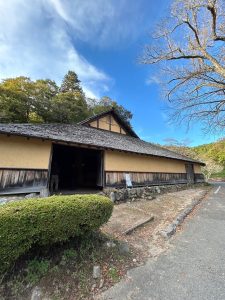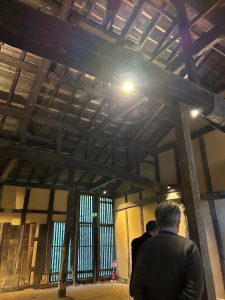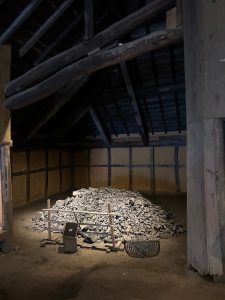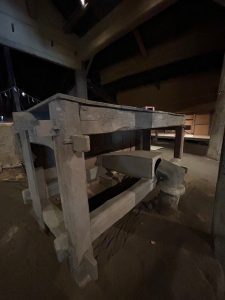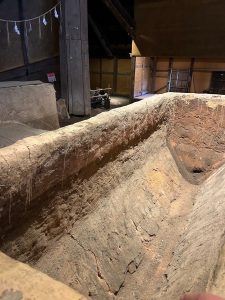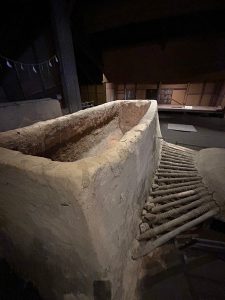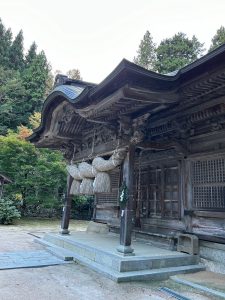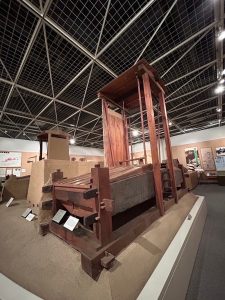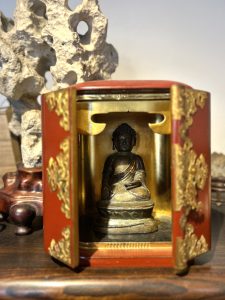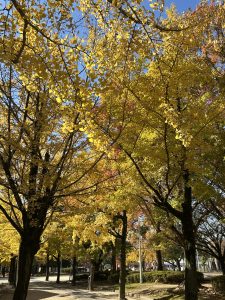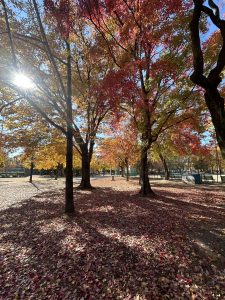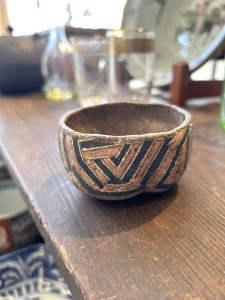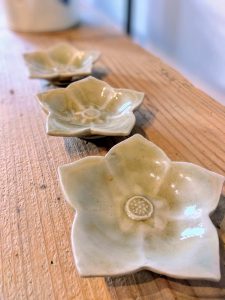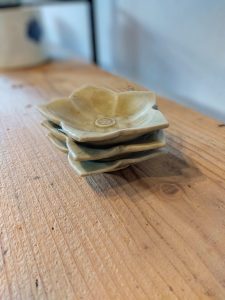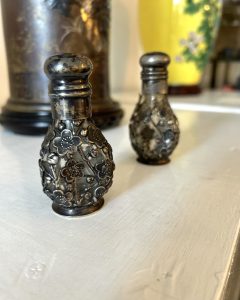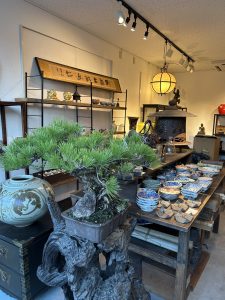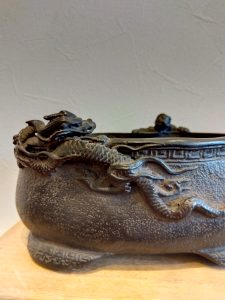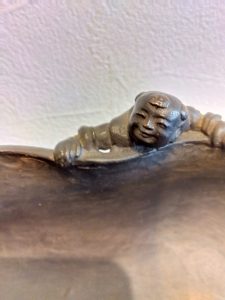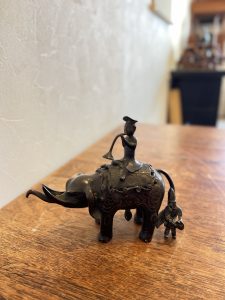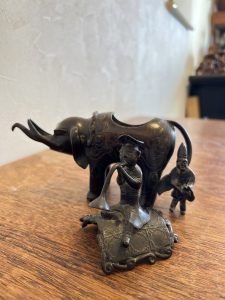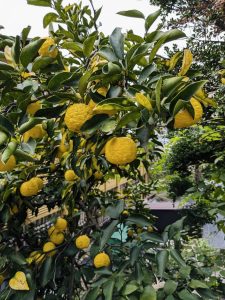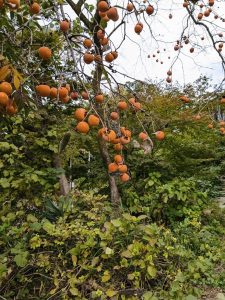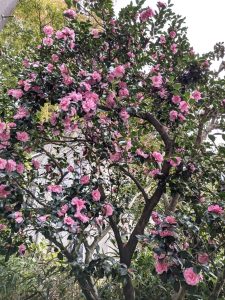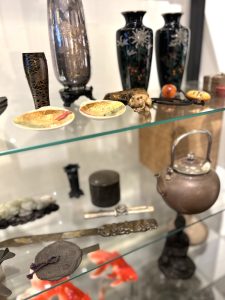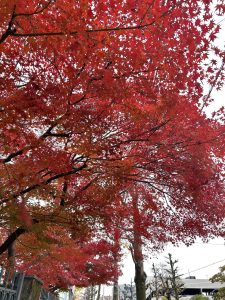そろそろ準備始めますか…(愛知県名古屋市千種区姫池通 骨董買取 古美術風光舎)
2024.12.06
師走を迎えると、お世話になった方へお歳暮を贈る習慣がありますが、いつも間際に慌てて準備をする羽目になるスタッフTです。
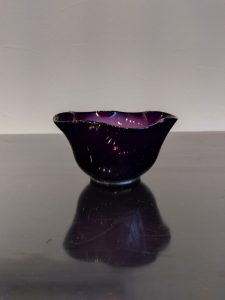
お歳暮は室町時代の先祖の霊を迎える「御霊祭り」がはじまりと言われますが、最終回がどうなるのか気になる大河ドラマ「光る君へ」の平安時代では、都に暮らす貴族の男性には、ゆかりある女性たちに新春に着る晴れ着や調度品を贈る習慣がありました。
『源氏物語』の「玉鬘」では、光源氏は、蔵から様々な衣装を出してきて、紫の上と共に、数人の女性のために選ぶ「衣(きぬ)配り」という場面が描かれています。
須磨や明石で流浪の生活から京に戻り、太政大臣となった35歳の光源氏が、六条院という住まいを構え、華麗な生活を送っている頃です。この豪邸は四季を象徴するように、大きく4つに分けられており、それぞれに光源氏にゆかりのある女性が住んでいました。
紫の上は光源氏と同じ住まいで、他の女性と顔を合わせることはないのですが、夫が他の女性のために衣裳を選ぶ様子を見せられるとは、どんな地獄なんですか…。
そんな紫の上のために光源氏が選んだ衣装は、「紅梅のいと紋浮きたる葡萄(えび)染の御小袿(こうちき)、今様色のいとすぐれたる」と書かれているように、紅梅を思わせるような文様が織り出された生地を葡萄染に染めた小袿に、今様色を添えています。
葡萄染の色は、山葡萄の実が熟したような、赤味のある紫の色合いで表されます。山葡萄のことをその当時は「葡萄葛(えびかずら)」と呼んでいたので、この色合いも「葡萄染」と書いて「ぶどうぞめ」と呼ぶのではなく、「えびぞめ」と呼ばれました。
その熟した実の絞り汁で、葡萄色を染められると想像してしまいそうですが、実際には紫根をたっぷり揉みだした染液に酢を多く入れて、赤みの紫になるように染められていました。それに添えた今様色とは流行色という意味で、紅花で染められた平安時代の女性が大変好んだ色だったと言われています。光源氏は、やはり最愛の女性である紫の上には、もっとも気品高い色を選んだようです。
そもそもお歳暮の起源とされる御霊祭とは、お正月に年神様を迎えるための行事のことをいいます。
歳神様は大晦日に家庭にやってきて、1年間家にとどまり守ってくれる存在だとされています。また、御霊祭は先祖の霊を祀るための行事でもあるため、そのお供え物として食べ物を用意していました。この習慣がお歳暮の起源といわれます。お供え物は保存性の高い食べ物が選ばれていたようで、塩鮭・数の子・するめ・塩ぶりなど魚介類が供えられていました。
さらに江戸時代になると、商人たちがお得意先への挨拶として品物を贈るようになり、次第に庶民の間にもお歳暮の習慣が広まっていきます。このような形で日頃お世話になっている方や、会社の取引先へと品物を贈る習慣へと変わっていったようです。
また、江戸時代には商人がお得意様に贈り物をする習慣がありました。商人は掛け売りで商売をしており、盆や春に半年分の清算をしていたため、そのお礼と来年もよろしくという意味で贈り物をしていたようです。
光源氏は、贈った衣装とともに、元日に着るようにという手紙も添えていて、実際に六条院に住まう女性を訪ね歩く場面も描かれています。新年を迎える際の女性たちの色とりどりの衣装はとても華やかで美しいものだったのでしょうが、紫の上の心情やいかに…。
「光る君へ」もあと2回で終わりで寂しいですね。物語がどのように着地するのか楽しみではありますが、実は次の大河ドラマ「べらぼう〜蔦重栄華乃夢噺〜」の方へ気持ちがうつりつつあるのですが、最後まで見届けたいと思います。
ではでは、また。
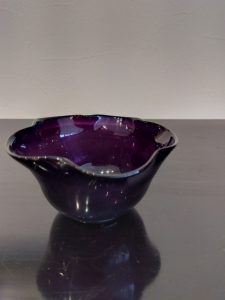
As the New Year approaches, it is customary to send year-end gifts to those who have taken care of us, but we always end up hurriedly preparing them at the last minute.
In the Heian period (794-1185), the period of the historical drama “Hikaru Kimi e” (To the Sunny Lady), which makes me wonder how the final episode will turn out, aristocratic men in the capital had a custom of giving fine clothes and furnishings to their female relatives to wear in the New Year.
In “Tamakazura” from “The Tale of Genji”, Hikaru Genji and Murasaki no Ue are depicted in a scene called “distributing kimonos”, in which Hikaru Genji brings out various costumes from his storehouse and chooses one for each of the women in his life.
It is the time when 35-year-old Hikaru Genji, who had returned to Kyoto from his wandering life in Suma and Akashi and became Minister of Grand Council of State, was leading a splendid life at his residence called Rokujoin. This palatial residence was divided into four major sections to symbolize the four seasons, each of which was inhabited by a woman associated with Hikaru Genji.
Although Murasaki no Ue shares the same residence with Hikaru Genji, she never sees the other women, so we can imagine what each woman looks like and what kind of personality she has based on the way Hikaru Genji chooses for the other women.
The costume that Hikaru Genji chose for Murasaki no Ue is described as “a grape-dyed kochiki with a red plum pattern and an excellent konnyaku color,” a kochiki made of fabric woven with a pattern reminiscent of red plum and dyed with grape dyes, with a konnyaku color.
The grape-dyed color is represented by a reddish purple hue, as if the berries of mountain grapes had ripened. Since wild grapes were called “ebikazura” in those days, this color was also called “ebizome” instead of “budouzome” (grape dyeing).
One might imagine that the juice from the ripe berries would be used to dye the grape color, but in fact the dye was made by adding a lot of vinegar to a dye solution made by rubbing in a lot of purple root, so that the color would be a reddish purple. The color “Imasama-iro” means “fashionable color,” and it is said that the color dyed with safflower was very popular among women in the Heian period. It seems that Hikaru Genji chose the most noble colors for his beloved Murasaki no Ue.
The Goreisai, which is said to be the origin of the year-end gift, is an event to welcome the New Year’s gods.
It is believed that the god of the year comes to the home on New Year’s Eve and stays in the home for a year to protect it. Since the Goreisai is also an event to enshrine the spirits of ancestors, food was prepared as an offering for them. This custom is said to be the origin of the year-end gift. Seafood with high preservation value was chosen as offerings, such as salted salmon, herring roe, surume, salted yellowtail, and other seafood.
In the Edo period (1603-1867), merchants began to send gifts as greetings to their customers, and the custom of year-end gift-giving gradually spread among the general public. In this way, the custom seems to have changed to giving gifts to those who had been indebted to them on a daily basis or to their business partners.
In addition, during the Edo period, there was a custom of merchants giving gifts to their clients. Merchants did business by selling goods on the spot and settled their half-yearly accounts on the tray or in the spring, so they gave gifts as a way of thanking customers for their business and wishing them good luck in the coming year.
Along with the costumes he gave her, Hikaru Genji also included a letter requesting that she wear them on New Year’s Day, and the scene depicts him actually visiting the women who resided in Rokujoin. The colorful costumes worn by the women on New Year’s Day must have been very glamorous and beautiful, and one wonders what Murasaki no Ue’s feelings were….
I’m sad that “To Hikaru Kimi” is coming to an end in just two more episodes. I am looking forward to seeing how the story will end, but in fact, my mind is shifting to the next drama, “Belabo – Tsutaju Eika No Yume Banashi,” but I would like to see it through to the end.
See you soon.
*****************
ご実家の整理やお片付けなどをされている方のご相談などが多くございます。
お片付けなどくれぐれもご無理のないようになさってくださいませ。
風光舎では古美術品や骨董品の他にも絵画や宝石、趣味のお品など様々なジャンルのものを買受しております。
お片付けをされていて、こういうものでもいいのかしらと迷われているものでも、どうぞお気軽にご相談下さいませ。
また風光舎は、出張買取も強化しております。ご近所はもちろん、愛知県内、岐阜県、三重県その他の県へも出張いたします。
まずは、お電話お待ちしております。
愛知県名古屋市千種区姫池通
骨董 買取【古美術 風光舎 名古屋店】
TEL052(734)8444
10:00-18:00 OPEN
#出張買取#骨董#古美術#骨董品#絵画#版画#茶道具#刀剣#彫刻

